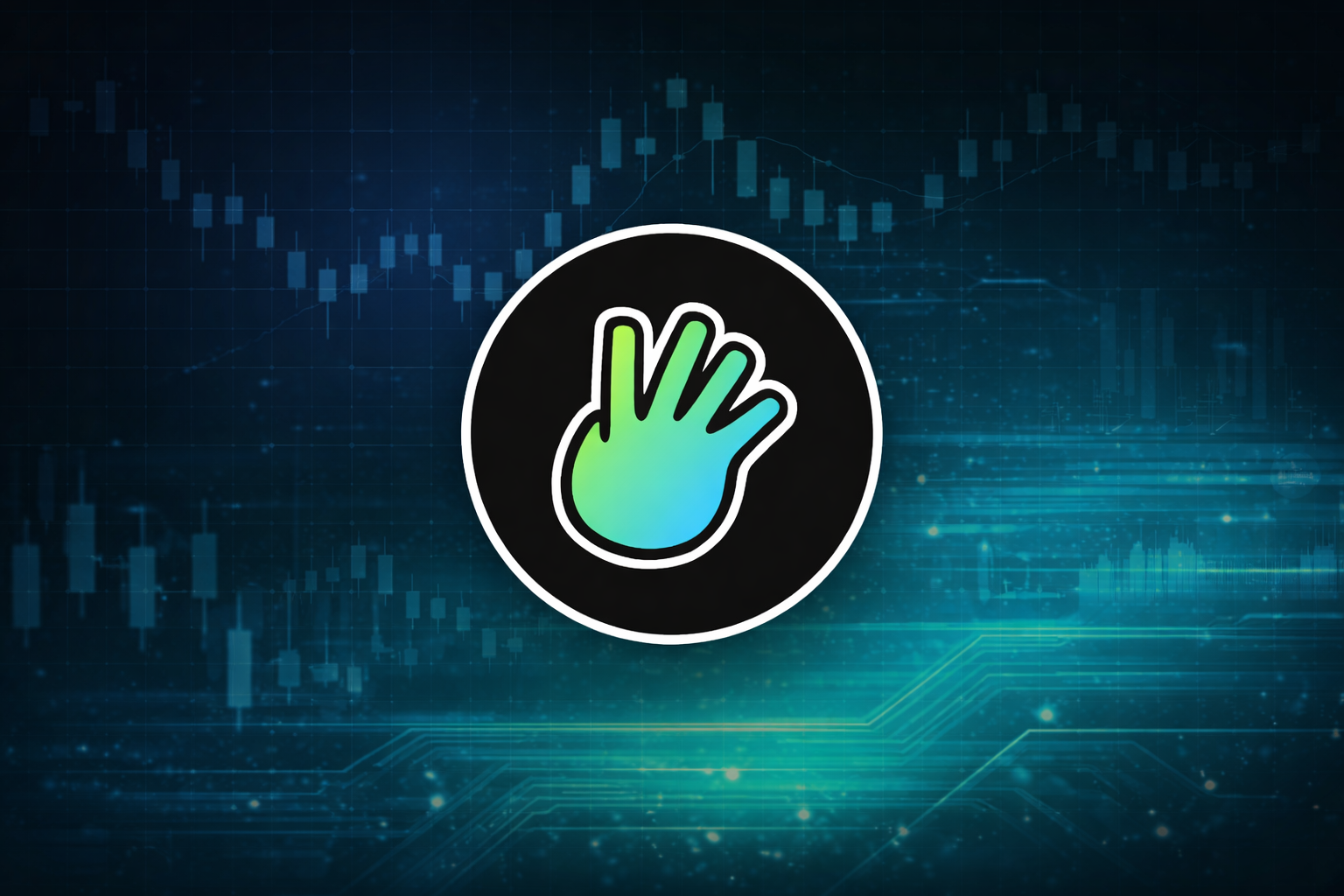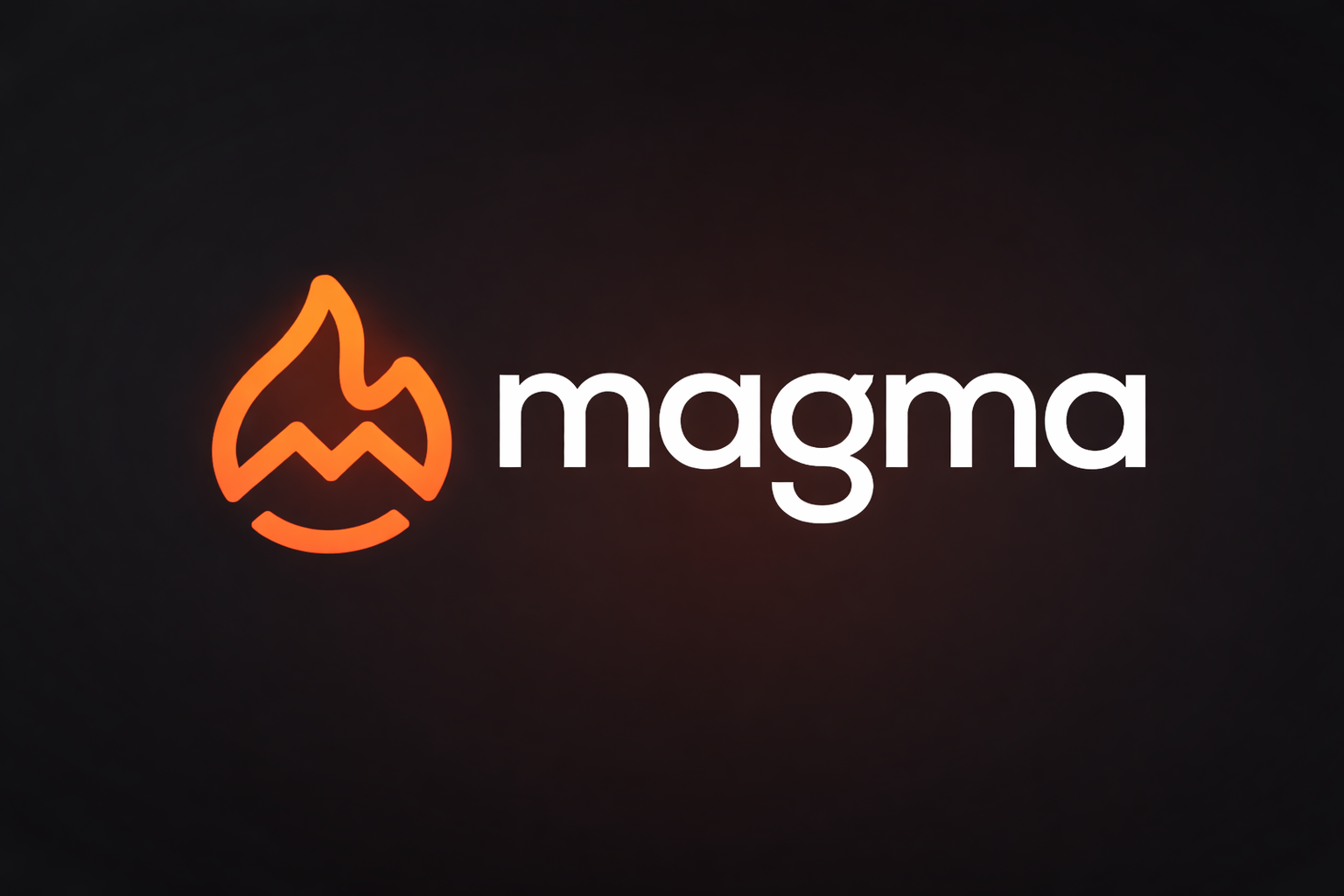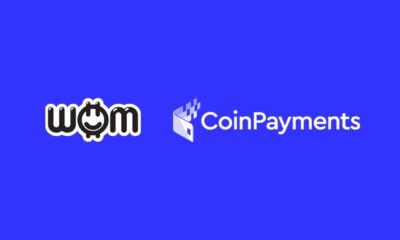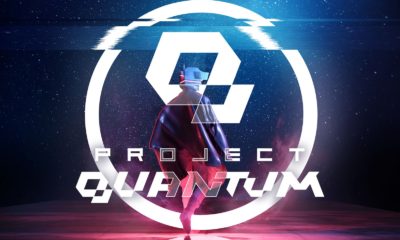Crypto
WEMADE Joins Forces with Chainalysis, CertiK and SentBe to Form Global Alliance for Korean Won Stablecoin

- (L-R) James Ang, VP of Chainalysis Asia Pacific; Shane Kim, VP of WEMADE and CEO of WEMIX; Ronghui Gu, Co-founder and CEO of CertiK; and Dan Yu, CSO of SentBe, celebrate the launch of the Global Alliance for KRW Stablecoin.
SINGAPORE, 28 November 2025 — Today,leading Korean gaming company WEMADE, parent company of the global blockchain ecosystem WEMIX, announced its partnership with blockchain powerhouses Chainalysis, SentBe, and CertiK to form the Global Alliance for Korean Won (KRW) Stablecoin (GAKS). The strategic partnership is set to strengthen the technical capabilities of StableNet, WEMADE’s dedicated blockchain mainnet and infrastructure for KRW stablecoins, and drive adoption of the KRW stablecoin worldwide.
South Korea is fast becoming a leading advocate in the stablecoin sector, with rapid advancement in the building of stablecoin infrastructure and regulatory frameworks quickly taking shape. To meet the growing demand, WEMADE seeks to accelerate the development of KRW-backed stablecoin infrastructure that prioritises security, regulatory compliance, real-world use, and global scalability, through its newly-formed alliance of global giants.
Key highlights of the partnership include:
- Security and Compliance
- Chainalysis: The global leader in blockchain compliance will integrate its Web3 threat detection solution Hexagate, transaction monitoring solution Sentinel, and AI-based scam prevention solution Alterya into StableNet.
- CertiK: The world’s largest Web3 security services provider will oversee security audits for StableNet and provide a block explorer to enhance the transparency and reliability of the infrastructure. CertiK will continue to offer node validation services to WEMADE, improving on-chain monitoring and mainnet technical support.
- Chainalysis: The global leader in blockchain compliance will integrate its Web3 threat detection solution Hexagate, transaction monitoring solution Sentinel, and AI-based scam prevention solution Alterya into StableNet.
- Real-World Application
- SentBe: The leading overseas remittance fintech company provides remittance and payment services in 33 different currencies to 174 countries worldwide, recording an accumulated remittance volume of approximately $10 billion USD. Leveraging its Singapore Major Payment Institution (MPI) license and its capability to operate proprietary on/off-ramp infrastructure, SentBe will collaborate on verification processes around WEMADE’s stablecoin-based cross-border remittance infrastructure.
Shane Kim, CEO, WEMIX, and VP, WEMADE, said: “This collaboration with international leaders is an incredibly significant milestone in securing the technical completeness of StableNet, and providing domestic partners with the opportunity to join a world-class technology alliance. With GAKS, we will present a new paradigm for the KRW-backed stablecoin beyond South Korea. We will concentrate our efforts on adhering to global standards, while establishing top-tier infrastructure that is truly indispensable in the wider financial ecosystem.”
The official partnership signing ceremony and the launch of GAKS took place in Singapore. Following the ceremony, participants engaged in a fireside chat to discuss the future of the KRW stablecoin, global market trends, and infrastructure requirements.
CertiK Co-founder and CEO Ronghui Gu said: “CertiK and WEMADE have collaborated multiple times in the past, witnessing WEMIX’s evolution from gaming into on-chain financial infrastructure. This partnership will deepen our collaboration and drive the development of a KRW-based stablecoin ecosystem. We look forward to leveraging CertiK’s expertise in security and compliance to help Korea build a safe, transparent, and globally competitive digital asset infrastructure.”
James Ang, VP, Chainalysis Asia Pacific, added: “The durability of any stablecoin ecosystem depends on uncompromising compliance, robust security, and complete transparency. By joining GAKS, Chainalysis is committed to ensuring that StableNet is built on a globally trusted compliance foundation from day one, capable of detecting threats, mitigating risk, and enabling safe adoption at scale. Together with WEMADE and our fellow alliance partners, we are laying the groundwork for a KRW stablecoin infrastructure that institutions, regulators, and users can rely on as it evolves into real-world financial and cross-border applications.”
The testnet source code for StableNet was released publicly in October this year, with the testnet scheduled to be released in December, followed by its official launch in early 2026 after stability verification.
About WEMADE
WEMADE is the only company combining over two decades of AAA game development success with a fully operational, game-proven blockchain ecosystem—built entirely on its proprietary Layer-1 mainnet, WEMIX3.0. Known for global hits such as The Legend of Mir, MIR4, NIGHT CROWS and Legend of YMIR, WEMADE is leading the industry in seamlessly integrating gameplay, tokenomics, NFTs, stablecoin payments, and blockchain infrastructure. Through WEMIX PLAY, WEMADE delivers a unified digital economy where players, creators, and investors can own, trade, and benefit from digital assets—powering the next generation of interactive entertainment and driving the evolution of Web3 gaming. For more information, please visit https://wemade.com/.
About WEMIX:
WEMIX is a leading blockchain ecosystem for gaming and digital economies, powered by its highly scalable, EVM-compatible Layer-1 mainnet, WEMIX3.0. With a wide range of integrated services—including NFTs, DeFi, stablecoin payments, and tokenized in-game assets—WEMIX enables seamless integration between gameplay and real-world value. Designed to be transparent, sustainable, and developer-friendly, WEMIX serves as the foundation for the global Web3 gaming ecosystem. For more information, please visit https://wemix.com/.
About CertiK:
CertiK is the largest Web3 security services provider, utilizing industry-leading formal verification technology to protect and monitor blockchain protocols and smart contracts. Founded in December 2017 by professors from Yale University and Columbia University, CertiK applies cutting-edge innovations from academia to enterprise, enabling mission-critical applications to scale with safety and correctness.
About Chainalysis:
Chainalysis is the blockchain data platform providing data, software, services, and research to government agencies, exchanges, financial institutions, and regulators in over 80 countries. Its mission is to build trust in blockchains.
About SentBe:
SentBe, a global foreign exchange (FX) total solutions provider, was founded in 2015 with the mission of creating “A World Without Financial Borders.” The company leads borderless financial services by offering innovative cross-border remittance and payment solutions characterized by fast transfer speeds, simple processes, and reasonable fees. Leveraging a broad global partnership network and robust foreign exchange management capabilities, SentBe has built a unique business infrastructure that aligns with global standards. SentBe provides optimal cross-border remittance and payment services for both individuals and businesses, expanding its influence beyond Asia.
Crypto
SEC Ends Aave Probe After Four Years Without Action

In a landmark moment for the decentralized finance (DeFi) industry, the U.S. Securities and Exchange Commission has officially closed its four-year investigation into Aave without issuing any enforcement action. The move brings long-awaited relief to Aave’s ecosystem and signals a potentially evolving regulatory approach toward DeFi protocols.
The outcome marks a meaningful victory for Aave and its founder, Stani Kulechov, who confirmed the news and emphasized the significant effort required to navigate the lengthy inquiry.
SEC Concludes Aave Investigation With No Enforcement
The investigation, which examined Aave’s governance model, protocol design, and token utility, has now ended without penalties or regulatory action. For Aave—one of the world’s largest decentralized liquidity markets—this resolution provides an opportunity to refocus fully on innovation and long-term development.
Kulechov shared that the process demanded extensive internal resources, highlighting the seriousness of the probe. With the conclusion reached, Aave is positioned to accelerate its roadmap without the overhang of regulatory uncertainty.
DeFi Community Welcomes the Decision
The SEC’s decision has been widely celebrated within the DeFi sector. Builders, investors, and governance participants view the outcome as a sign of maturing regulatory understanding around decentralized protocols.
Kulechov expressed optimism for the broader industry, stating that DeFi can now continue shaping the future of open finance without being restricted by ambiguous oversight. While the decision does not eliminate future regulatory risks, it does offer clarity for other DeFi teams working to balance decentralization with compliance.
A Pattern of Non-Enforcement in DeFi?
The Aave case fits into a broader emerging trend: several DeFi-related SEC investigations have ended with minimal or no enforcement actions. Analysts say this could reflect a shift away from punitive measures and toward evaluating whether certain governance tokens function more like utilities than securities.
For Aave, the decision strengthens the argument that decentralized governance models and transparent, code-driven protocols may warrant differentiated regulatory treatment. Industry researchers suggest this may influence future token classifications and regulatory frameworks across the DeFi landscape.
A Milestone in DeFi’s Regulatory Journey
As the DeFi ecosystem continues to grow, the closure of the Aave probe may serve as a reference point for the industry’s evolution under regulatory oversight. For now, Aave can move forward—and the broader community can view this as an encouraging indicator of cooperation rather than confrontation between regulators and decentralized networks.
“This process demanded significant effort and resources from our team, and from me personally as the founder, to protect Aave, its ecosystem, and DeFi more broadly.” — Stani Kulechov
Crypto
Theoriq Unveils Mainnet, Ushering In a New Era of AI-Driven Autonomous Finance

Theoriq has officially launched its Mainnet—an upgrade that may become one of the most important turning points in the evolution of decentralized finance. With this rollout, developers can now build, deploy, and scale autonomous onchain agents capable of executing real-time financial strategies, ushering in what Theoriq calls the future of AI-native programmable capital.
A Unified Infrastructure for AI-Native DeFi
Theoriq’s Mainnet brings together three critical components—agent logic, execution infrastructure, and liquidity—into one fully integrated, onchain environment. This marks a major leap forward from the fragmented tooling developers previously relied on when building autonomous DeFi automation.
With the launch of AlphaSwarm and AlphaProtocol, developers can now register verifiable AI agents, deploy autonomous strategies, and connect directly to decentralized capital sources, all within a unified system.
The Mainnet follows the strong performance of AlphaVault, Theoriq’s proof-of-concept vault that attracted over $21 million in TVL within four days, showcasing the appetite for agent-driven financial automation.
“The Mainnet creates a system where great AI agents can thrive, earn income, and help millions of people,” said Ron Bodkin, CEO and Co-Founder of Theoriq. “We’re building the infrastructure where autonomous intelligence meets usable, programmable capital.”
What Developers Can Do Starting Today
Theoriq’s Mainnet unlocks a suite of powerful capabilities:
Build & Register Onchain Agents
Using the Agent SDK, developers can:
- Create verifiable agent identities
- Register agents directly onchain
- Integrate seamlessly with AlphaProtocol
This ensures that agents are discoverable, verifiable, and securely connected to relevant contracts.
Access Capital & Execute Strategies
While advanced capital-routing features are still coming, the initial release already allows developers to:
- Coordinate strategies
- Deploy capital under controlled parameters
- Connect agents to DeFi protocols and liquidity sources
Operate Modular, Secure Intelligence
The Messaging Bus enables authenticated, tamper-resistant communication between agents and smart contracts — ensuring reliable execution for complex financial automation.
“Developers have been building amazing agents with nowhere to launch or monetize them,” said Jeremy Millar, Chairman of Theoriq. “Now they have a real onchain market—and users get AI that works for them, not just talks to them.”
THQ Staking Goes Live on Base
Alongside the Mainnet launch, Theoriq activated staking for $THQ, enabling participants to:
- Stake and receive sTHQ
- Contribute to network security
- Prepare for future governance utilities
Delegation is not yet active, but this staking layer establishes the groundwork for agent reputation systems and capital allocation models tied directly to agent performance.
A Step Toward Fully Autonomous DeFi
Theoriq’s Mainnet represents more than a technical upgrade—it’s a philosophical shift in how DeFi operates. Instead of manual user-driven strategies, Theoriq envisions a future where smart agents autonomously:
- React to market conditions
- Optimize liquidity
- Manage capital in real time
- Integrate across multiple chains and protocols
Pei Chen, Executive Director and COO of Theoriq, described the transition clearly:
“This isn’t just another upgrade. It’s the shift from manually operated DeFi to automated agent economies. We’re opening the door to a new frontier for DeFi.”
Backed by Leading Investors and Ecosystem Partners
Supported by $10.4 million in funding from notable VCs—including Hack VC, IOSG, HashKey Capital, and Foresight Ventures—Theoriq is positioning itself as a foundational layer for the next generation of AI-powered decentralized finance.
Its ecosystem partners include major players such as:
- Base
- Mellow
- Lido
- Uniswap
With Mainnet now open to developers globally, Theoriq is poised to become a leader in AI-native DeFi infrastructure.
Crypto
Magma Finance Emerges as a Cross-Chain Liquidity Engine With Bond-Backed Stability

Magma Finance, a fast-growing DeFi protocol focused on cross-chain liquidity and yield generation, is positioning itself as a next-generation hub for decentralized stable assets. The protocol has quickly attracted attention for its model centered around bond-backed liquidity, automated yield routing, and a stablecoin architecture designed to maintain capital efficiency across multiple chains.
With market interest rising around alternative stablecoin frameworks, Magma Finance aims to address the growing demand for reliable liquidity that can move seamlessly across networks while remaining backed by transparent, yield-producing collateral.
A Stability Model Built on Real Yield
Magma Finance’s core asset, MAGMA, sits at the center of its ecosystem. The protocol is structured around a vault-based system that supports:
- Bond-backed collateral pools
- Automated yield strategies
- Minting of chain-native stable assets
This design allows users to deploy collateral into Magma vaults, which then interact with liquidity partners to generate yield. Instead of relying solely on algorithmic stability or synthetic value, Magma positions itself as a hybrid model backed by real yield sources.
Cross-Chain Liquidity as a Primary Value Proposition
One of Magma’s defining features is its emphasis on cross-chain operability. The protocol is built to function across multiple ecosystems, enabling:
- Stable asset minting across chains
- Efficient movement of liquidity without fragmentation
- Unified collateral management
This interoperability plays a crucial role in Magma’s growth narrative, especially as multi-chain DeFi continues to evolve.
The ecosystem also prioritizes smooth settlement between chains, leveraging modular architecture that supports speed, low fees, and native bridging.
Token Utility and Governance Expansion
The MAGMA token is central to protocol governance and value routing. Its utility includes:
- Governance voting
- Incentive alignment for liquidity providers
- Participation in yield distribution
- Collateral use across future Magma products
The project’s roadmap includes expanded governance features in 2026, enabling token holders to shape treasury deployment, collateral partners, and risk frameworks.
Growing Institutional Attention
With an increasing focus on stable, yield-backed assets in DeFi, Magma Finance has garnered interest from institutional and retail participants looking for alternatives to purely algorithmic models. The protocol’s emphasis on transparency and real-yield collateralization positions it well within a rapidly maturing sector.
Industry observers have noted that Magma’s approach aligns with broader trends where stablecoin issuers and liquidity platforms shift toward bond-backed reserves, risk-controlled yield, and cross-chain accessibility.
Outlook: Magma’s Multi-Chain Liquidity Vision
Magma Finance’s trajectory suggests a platform aiming to blend stability, scalability, and interoperability. As the protocol continues expanding across chains and refining its bond-backed architecture, MAGMA is likely to play a more prominent role in governance, liquidity distribution, and stable asset creation.
If adoption continues at its current pace, Magma Finance may evolve into a key liquidity layer for yield-bearing stable assets in a multi-chain DeFi environment.
-

 Crypto3 years ago
Crypto3 years agoCardalonia Aiming To Become The Biggest Metaverse Project On Cardano
-

 Press Release5 years ago
Press Release5 years agoP2P2C BREAKTHROUGH CREATES A CONNECTION BETWEEN ETM TOKEN AND THE SUPER PROFITABLE MARKET
-

 Blockchain5 years ago
Blockchain5 years agoWOM Protocol partners with CoinPayments, the world’s largest cryptocurrency payments processor
-

 Press Release5 years ago
Press Release5 years agoETHERSMART DEVELOPER’S VISION MADE FINTECH COMPANY BECOME DUBAI’S TOP DIGITAL BANK
-

 Press Release5 years ago
Press Release5 years agoProject Quantum – Decentralised AAA Gaming
-

 Blockchain5 years ago
Blockchain5 years agoWOM Protocol Recommended by Premier Crypto Analyst as only full featured project for August
-

 Press Release5 years ago
Press Release5 years agoETHERSMART DEVELOPER’S VISION MADE FINTECH COMPANY BECOME DUBAI’S TOP DIGITAL BANK
-

 Blockchain6 years ago
Blockchain6 years ago1.5 Times More Bitcoin is purchased by Grayscale Than Daily Mined Coins






